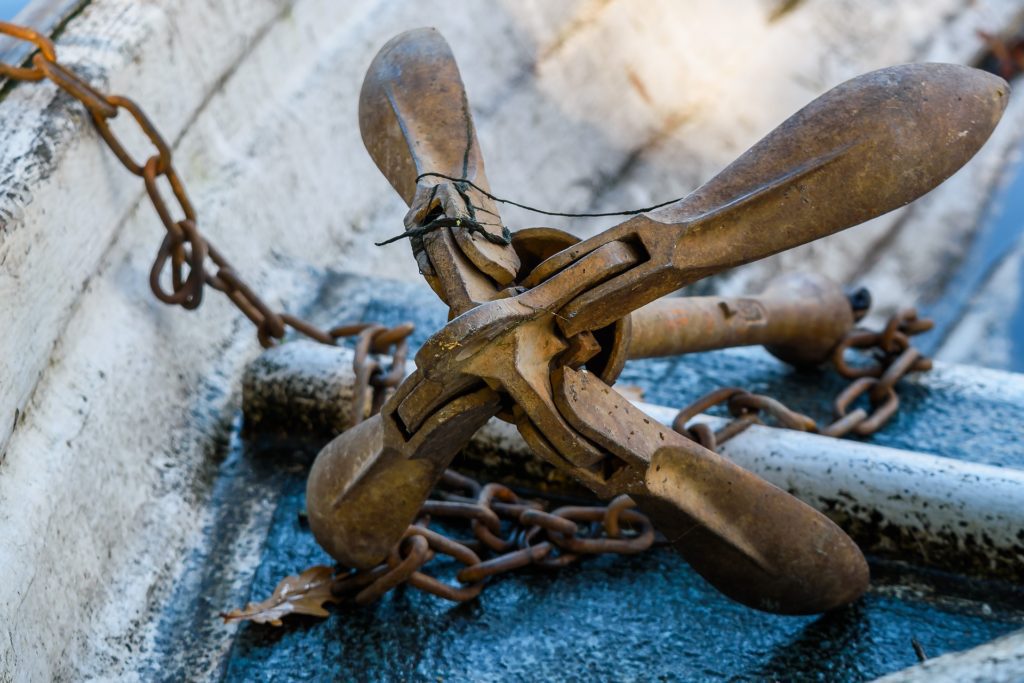This unspeakable happiness seems accessible as long as you choose the right place and the right conditions to enjoy a privileged and serene moment. Thus, anchoring does not present any particular difficulties for a boater. However, it is essential to respect some precautions and rules during your navigations.
The word “anchorage” has different meanings, two of which belong to the maritime vocabulary:
- It designates the place where a boat anchors;
- Means the immobilization of a vessel by means of an anchor resting on the sea bed.
In this first article, we are interested in the latter definition.
Anchoring is a useful maneuver for a temporary mooring. However, it is also useful when the sails or the engine of a boat are no longer operational.
Division 240, published by the Ministry of Ecological and Solidarity Transition, defines the safety rules applicable to the navigation of pleasure craft at sea with a length of less than 24 meters. Thus, it states in article 2.03.6 that the basic safety equipment of a pleasure boat includes at least “a mooring line appropriate to the boat and its navigation area” (valid for boats with a light displacement of more than 250 kg).
1 – Anchoring: some definitions
- Mooring equipment: All the material necessary to anchor your boat. They include several elements;
- The anchor line: it includes an anchor, chain and rope. The rope is the rope that allows the boat’s mooring line to be extended without weighing it down too much. Indeed, it is slightly elastic and therefore allows the damping of jolts. It is attached to the boat by the basting point, which is located in the boat’s anchor locker.

- The anchor locker: housing in the hull of the boat to accommodate the chain and rope. In general, the anchor locker is self-draining, so it is necessary to check that the drain is not obstructed by sand or algae. Sometimes the anchor locker does not have direct access from the deck, so the chain enters through the hawsehole.
- The windlass: winch equipped with an axis, manual or electric, device to raise the mooring line of the boat. Equipped with a sprocket (crown formed at the imprint of the chain stitches) and a headstock (metal block to maneuver the boat or a mooring line that you want to turn with the windlass). Sometimes the spool/pin axis of the windlass is arranged vertically, in which case the device is called capstan. The device is equipped with a brake to control the descent of the boat’s mooring chain, which is operated by a lever called a brinquebale.

- The anch or ring: ring on the anchor on which the boat’s anchor chain is fixed;
2 – The different types of anchors
The market offers several types of anchors for your sailboat or motorboat. However, there is no universal model. Regularly, the boating press conducts tests to establish comparisons. The choice of an anchor is therefore to find the best compromise. In addition, it is essential that it be sized according to the size and weight of the boat. The nature of the bottom obviously determines how well the anchor will hold. In fact, the holding power of an anchor does not depend on its weight, but on its ability to sink into the sea bed. This phenomenon can be compared to a ploughshare penetrating the earth.
Once the anchor has penetrated the bottom substrate, it must not rotate on itself. If it does, the anchor chain will exert traction and risk “hunting“. An anchor chases when the traction of the anchor chain is not horizontal on the bottom. This is often the case when the length of the anchor line is insufficient.
The most common anchor models
The most common modern anchors in the boating world are :
 Plate
Plate Plow or Soc
Plow or Soc Concave shovel
Concave shovel Grapple
Grapple
Grapple anchors are mainly used for mooring a dinghy.
Note that the floating anchor is not strictly speaking an anchor. Indeed, it is a device that allows to stabilize a boat in bad weather.
How to choose the right anchor?
No anchor is infallible. Also, the choice of anchor always involves a certain amount of subjectivity based on the sailing basin and sailing habits, or even the country or region of origin of the boat or the skipper. The shape of the anchor contributes to its good holding. But, beyond any consideration, the anchor must fit the boat.
Shipchandlers and stevedores offer many different models. Thus, they will be able to give you relevant advice according to the specificities of each one.
On a boat there are usually two anchor lines. First, a “heavy” one, then a “light” one.
In the next article, we will look at the anchoring maneuver and its various techniques. Choosing the right place to anchor your boat, making an anchor and checking that it is secure: these are the points that will be covered.
➡️ For more tips, go to the Tips and Best Practices section of our blog
Photo credits:
- Nootica.fr: mooring line, anchor rocna galva
- Orange-marine.com : horizontal axis windlasses
- h2r-equipements.com : flat anchor, kobra anchor
- piecesbateaux.com: grapple anchor
